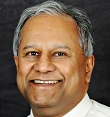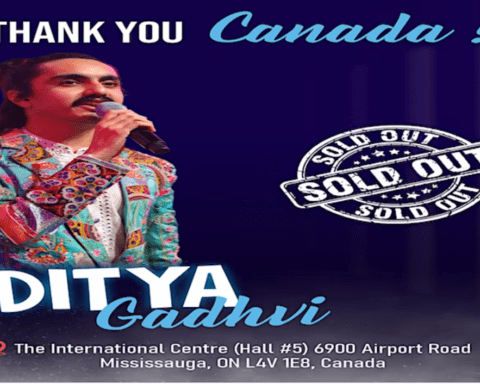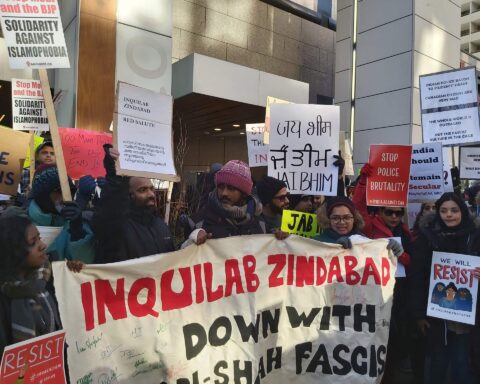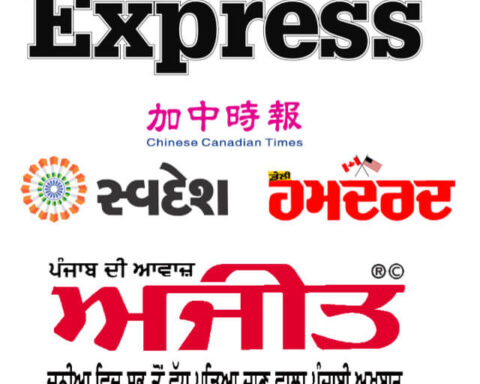“The lotus has bloomed and there is a new dawn of hope.” That was the Bharatiya Janata Party, BJP’s message invoking its symbol in the wake of a spectacular victory last week in what has been one of the most intensely fought federal elections in India’s history.
Said originally in Hindi as “Aaj kamal khil chuka hai aur asha ki nayi subah ho gayi hai,” the phrase has a resonance similar to the “It’s morning again in America” imagery used by Ronald Reagan’s 1984 presidential campaign in the U.S. As a metaphor for renewal, it echoes the Indian voter’s aspiration for radical change, spoken with a unity of purpose not seen in the past few decades.
The sheer scale of the BJP’s electoral victory made it clear that India had become fed up with corruption under the Congress government, as well as the policy paralysis that came as bureaucrats sat on projects, for fear of getting arrested.
By winning 282 parliamentary seats on its own, out of the 543 for which elections were held, the BJP is the first party to win such a majority since the 1984 elections. In doing so, it has avoided the need to form a coalition government with other federal parties. Coalition politics has been a bane for India’s administrators and can rightly be blamed for some of the mess that India finds itself in.
The humiliating defeat couldn’t be worse for the Congress party, as its measly tally of 44 seats falls short of the 54 seats (10 per cent of total seats) required to be considered as an official opposition party, whose member can be the leader of the opposition with cabinet rank.
Arrogance of the elite
As elections go, this was the biggest democratic exercise so far in the history of humankind, involving 815 million people and a voter turnout of around 67 per cent that would put many western countries to shame. It has also cast aside several shibboleths and exposed the crass hypocrisy of India’s ossified elite keen on maintaining status quo through kleptocratic crony socialism.
It was elitist arrogance that led a senior ruling Congress leader to mock the BJP candidate, Narendra Modi’s, prime ministerial ambitions by saying the son of a tea vendor was only fit to sell the beverage at his party’s meetings. Nevertheless, mockery combined with his opponents projecting Modi as a bogeyman helped turn the parliamentary election battle into a presidential-style campaign pitting him against Congress party’s Rahul Gandhi, the anointed scion of the Nehru dynasty.
It helped to project Modi as a strong-willed leader who could pull the country out of the economic rut it found itself in, after a promising start in the early part of the 21st century that has been heralded as belonging to India and China. While China lived up to its promise, India faltered and badly bruised the hopes and aspiration of a young population eager to taste the fruits of success.
Sensing the mood of the voters, Modi made his humble origins as the son of a tea vendor and the reason for mockery into a key rallying point for his campaign. He said as his opponents did not know what poverty is all about, he is better placed to fight it because of his lived experience and his good governance record as a three-time chief minister (premier) of the state of Gujarat for 15 years.
Most demonized Indian leader
Undoubtedly, Modi has been the most demonized political leader in India’s living memory for all kinds of wrongs, none of which has stood any scrutiny, judicial or otherwise. The main accusation against him is of doing little to stop religious riots in Gujarat under his watch in 2002 when 790 Muslims and 254 Hindus were killed. Modi has consistently denied the allegation and the courts have also not censured him so far. The riots were sparked by a fire on a train that killed 59 Hindu pilgrims and for which Muslims were blamed.
While Modi is rightly pilloried for the communal riots, the hypocrisy of his detractors is evident by their silence over the even worse rioting in 1984, under the watch of the Congress that targeted Sikhs across India when then prime minister Indira Gandhi was killed by her Sikh bodyguards.
Communal flare-ups have been an ugly reality of India ever since the British sowed the seeds of division as part of their colonial “divide and rule” policy. It is equally unfortunate that the Congress, India’s “natural ruling party,” similar to the Liberals here in Canada, perpetuated the divide for its own selfish vote-bank politics to remain in power for most of the six decades since independence.
It is equally unfortunate that the Congress, India’s “natural ruling party,” similar to the Liberals here in Canada, perpetuated the divide for its own selfish vote-bank politics to remain in power for most of the six decades since independence.
Modi and the BJP believe India has moved on since 2002 and have been trying to come across as a party committed to economic growth. So great is the desire for change, especially among India’s 300 million strong middle class, and so firmly has Modi stayed on message, that his handling of the one riot at the beginning of his first term as Gujarat’s chief minister mattered less and less to many voters. It is to Modi’s credit that he has not only maintained a prolonged period of peace and harmony in the state, but has also delivered sustained economic growth close to 10% of GDP that is better than the national average.
Growth as panacea
Modi’s campaign speeches were replete with references to development and no overt references to Hindu nationalism. The BJP manifesto mentions the word “technology” 58 times and the words “Hindu” and “Muslim” just once. The main message pushed out was that the solution to India’s myriad problems lies in Modi’s decisive leadership.
“Ask yourself if you want to fight each other or poverty,” is how Modi sent people home peacefully in one of the most remarkable public performances by any Indian politician after bombs were set off during one of his election rallies in Bihar state. A welcome pointer, because as India’s next prime minister, it is to be expected that he puts the politician behind and lets the statesman rise.
In the reflexively negative way they have long treated India, Modi has been shunned by several Western countries, including Canada, for his alleged human rights violation. But the same governments who once sought to keep him out of their countries have come to realize the perils of a self-defeating policy of trying to isolate the leader of the world’s largest democratic nation.
Canada’s gain
And to Canada’s credit, Stephen Harper’s Conservatives have never been enthusiastic about the sanctions they inherited from the Liberals. Canadian government and businesses, contrary to some writings in the mainstream media here, were focusing on Gujarat state as a suitable partner for economic partnerships in India.
As promised by the Conservatives during the 2008 federal election, Canada has quickly moved to open a trade office in Gujarat. When Bombardier was looking around to set up its railway vehicle manufacturing factory to cater to the growing Indian market and also serve as a hub for exporting to South East Asia and Asia Pacific, it decided on Gujarat. Benoit Cattin Martel, president of the company, is quoted as saying that building the US$41 million plant in 18 months was a world record for it. “In fact it’s proven to be a very good choice because we have great support from Chief Minister Narendra Modi and his team.”
Big business, both national and foreign, is impressed by Modi’s administration in the state of Gujarat. Anand Mahindra, chairman of India’s Mahindra and Mahindra conglomerate that has started started selling its tractors here in Canada, thinks that “the day is not far when people will talk about the Gujarat model of growth in China.” Ratan Tata, the then-chairman of India’s Tata Group, famously said in a public address in 2007: “It is stupid if you are not in Gujarat”.
A sentiment many hope will apply to the whole of India with Modi at the helm. “It’s the best result you could have hoped for,” Peter Sutherland, the head of the Canada-India Business Council and a former Canadian high commissioner to India, told the Globe and Mail. “You’ve got a strong government that is in a position to do things.” Sutherland now expects to see a free trade agreement between Canada and India signed by the end of the year after having been in “a state of abeyance.” Canada and India began formal free trade discussions in 2010.
“It’s the best result you could have hoped for,” said Peter Sutherland, the head of the Canada-India Business Council and a former Canadian high commissioner to India.
Prem Watsa, the Canadian who heads Fairfax Financial Holdings Ltd., is also bullish on India now and plans to launch a publicly listed India fund. Watsa, a well known value investor who has been active in India for about 15 years, in an interview compared India’s current trajectory under Modi to the emergence of modern Singapore under Lee Kuan Yew.
In recent years, Modi’s Gujarat has been compared with Guangdong province, the spearhead of China’s economic revival. But repeating that success nationally presents significant challenges in a country with a complex federal structure, a bureaucracy more wedded to socialist controls than reform and a growing gap between rich and poor among its 1.2 billion people.
Modi will have a fight on his hands to gain full cooperation from many state governments, which he needs to implement his agenda nationwide. But there is hope on this count. The first time the Indian economy started taking off in 1991 was when a former state chief minister, P.V. Narasimha Rao, ruled as prime minister. Modi too is a former chief minister taking on the job, but with three times more experience as a provincial leader.
Globally, too, Modi is not an unknown quantity in countries that will matter most to India in the coming years. He has visited China and Japan and the political class in these two countries and other neighbours will surely look at India through a different prism. With the withdrawal of U.S. forces from Afghanistan, Modi’s India can expect turbulence in a neighbourhood that never been friendly to a dominant South Asian power.
Nevertheless, the biggest challenge confronting Modi’s government will be meeting the demand for change from an increasingly urban and youthful India that has been edging out the old rural peasantry as the decisive demographic. A new politics of aspiration is set to replace the old politics of grievance which was about redistributing the economic pie rather than growing it.
That more than a billion hopes are riding on the promises of a single man can be both awe-inspiring and frightening. But India needs its new morning more than any other country because of the sheer number of people who need a good night’s rest.
Ranjit is a Toronto-based writer with interest in Canadian civic affairs, immigration, the environment and motoring. Maytree and Al Jazzera English alumnus.





